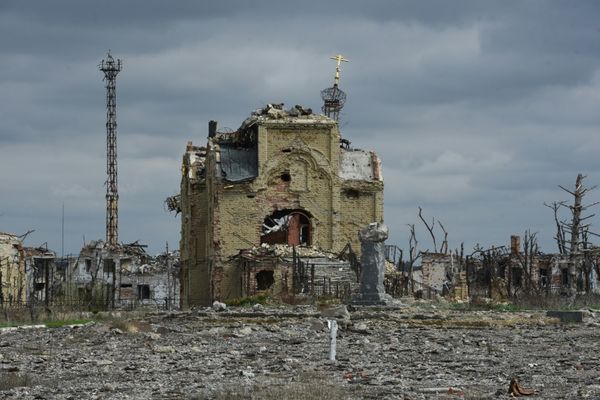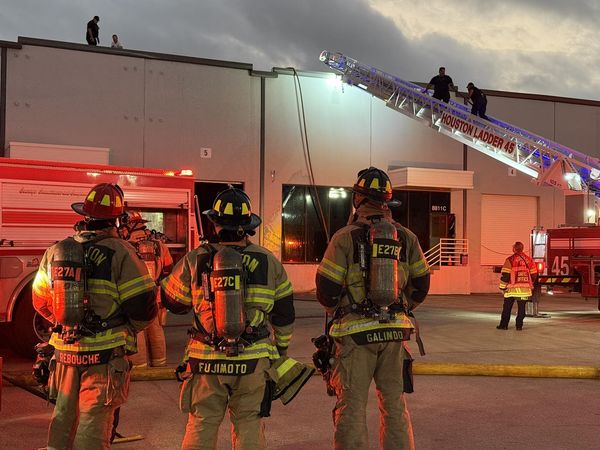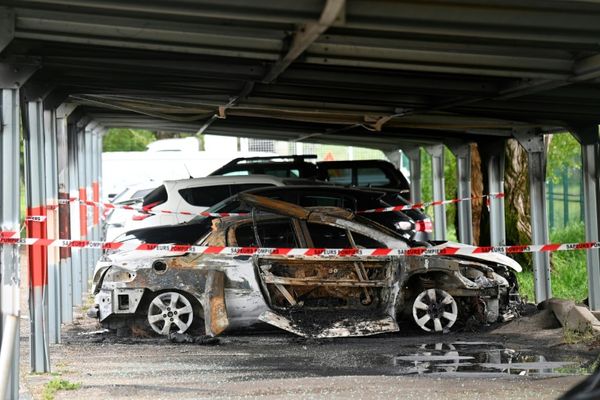
Turns out the most expensive tennis court in the world isn’t at the All England Club, Roland Garros, or even in Monte Carlo, but on a scrappy patch of parkland behind a chain-link fence on West Vineland Road, Augusta. It isn’t a lot to look at. The net sags and the asphalt is swollen, but there’s a broom with a snapped-off handle in the corner if you want to sweep away the pine needles (it’s been a while since anyone has). The court was sold just last month for $350,000, which is more than the homes either side are valued at, and just about enough to build a dozen more exactly like it.
If you want to understand exactly why it’s worth so much, well, you’d best ask Augusta National chairman Fred Ridley. The court sits right by the club’s eastern boundary, at Gate 14 over on the far side of the 10th hole. Now, the club didn’t just get the court for their money. The park it’s in, which measures 50 paces by twice as many again, also includes four benches, two swings, a plastic roundabout, a BBQ, a bin and a little blue elephant on a spring, which you can only hope the city’s Parks and Rec agreed to throw in given what they’re making off the sale.
It all added up to an assessed value of around $58,000, or one sixth of what the club paid for it.
Truth is, you can name your price if Augusta National wants what you’ve got. A lot of people have made a lot of money out of living next door to the golf course. The club got the Wendy’s down the road for $3.4m, the Pep Boys auto shop on the corner for $6.9m, the little bit of land they bought off the Augusta Country Club is supposed to have cost $20m, and the shopping mall next door another $26m. And that’s before you start counting up all the houses they bought and levelled to make room for their new car park.
In 2019 the Wall Street Journal calculated that Augusta National had spent $200m buying up the surrounding acres over the past 20 years, but that’s said to be well short of the real figure. Some of the land has been used to nip and tuck the course. For 70 years, it played 6,900 yards, but these days it’s up to 7,550. Ridley says he has drawn a red-line at 8,000 yards, “I’ve said in the past I hope we won’t play the Masters at 8,000 yards, but that is likely to happen in the not too distant future,” he said on Wednesday. “We have some more room, but we don’t have a lot”.
Most of it, though, has been used to expand all that southern hospitality. Just this year, Ridley announced the opening of the “first phase” of a new hospitality centre called Map & Flag, which is the first thing they’ve built off the actual property (the tickets, if you were wondering, run to $17,000 each). Ridley also revealed the club are going to knock up an underground car parking complex this winter, and, a year later, will open what he described as “a three-level state of the art facility designed to facilitate every need for the players, their families and support teams”.
The theory’s always been that the club wants to set things up so that the patrons, and players, will be able to stop at the Masters without ever stepping foot in a bit of the city that isn’t owned and run by the green jackets. Whichever way you measure it, Augusta is one of the poorest places in the USA. It regularly features in surveys of the nation’s neediest cities. Whether they’re renting out their houses, letting patrons park in their yards or bussing tables downtown, a lot of locals depend on the tournament, and resent the sense that the club is trying to cut them out of it.
Ridley, to his credit, is a lot better at community outreach than some of his more patrician predecessors seemed to be. “Historically, we have been somewhat passive in our support,” Ridley said, before quickly rescuing himself by explaining he only meant the club used to keep quiet about all the good work they were doing for worry it would be unseemly to take the credit. They have, he went on, been “more active” since he took over. Which means they’ve been putting their small change into local development programmes like a non-profit community centre called “the Hub”.
They’ve also pledged to redevelop the local public course known as “the Patch”, where a lot of the old caddies first learned to play. Which means Augusta’s about to become one of the few places around with a municipal 18 redesigned by the legendary architect Tom Fazio. As for that local tennis court, though, anyone who wants to play it best get in quick. Chances are that this time next year, it’ll be three-feet under a new driveway and you’ll need a badge, or a green jacket, to get anywhere near it.







